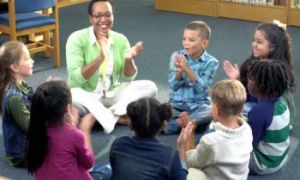

Working as a childcare professional enables you to interact with children, their families, co-workers and sometimes childcare specialists. It is important to maintain open and honest communication with all those involved at your centre and to establish comfortable relationships with the families, co-workers and specialists you are dealing with.
While working in an early childhood setting, one of the positions available is a room leader. A room leader is an educator who leads the room, responsible for the children the staff and running of the room. A room leader is not an easy job and it takes someone who is experienced and qualified to successfully become an efficient leader of the room.
Firstly you need to think about whether you want to become a Director. Just because you are a good educator may not mean you will be a good Director. If you do not enjoy managing people, dealing with staff problems, talking about some things as they are uncomfortable topics to deal with, talk to parents who complain, do lots of mundane paperwork and sitting in an office staring at a computer screen, then most likely being a Director is NOT for you. There is no particular way to ‘become a Director’ however you can maximise your chances by doing some things.
How you support work placement students can depend on your own position within the centre, however no matter what your position you will have something to offer the student.
Encouragement is a self-esteem enhancing tool that we as childcare professionals should utilize more often. By using encouragement it focuses on the child rather than on the adult. It helps children to feel that we (adults) are interested in them and in what they are doing. It also shows that we have taken the time to notice how they are feeling.
 Here is the list of the EYLF Learning Outcomes that you can use as a guide or reference for your documentation and planning. The EYLF… Read More
Here is the list of the EYLF Learning Outcomes that you can use as a guide or reference for your documentation and planning. The EYLF… Read More
 The EYLF is a guide which consists of Principles, Practices and 5 main Learning Outcomes along with each of their sub outcomes, based on identity,… Read More
The EYLF is a guide which consists of Principles, Practices and 5 main Learning Outcomes along with each of their sub outcomes, based on identity,… Read More
 This is a guide on How to Write a Learning Story. It provides information on What Is A Learning Story, Writing A Learning Story, Sample… Read More
This is a guide on How to Write a Learning Story. It provides information on What Is A Learning Story, Writing A Learning Story, Sample… Read More
 One of the most important types of documentation methods that educators needs to be familiar with are “observations”. Observations are crucial for all early childhood… Read More
One of the most important types of documentation methods that educators needs to be familiar with are “observations”. Observations are crucial for all early childhood… Read More
 To support children achieve learning outcomes from the EYLF Framework, the following list gives educators examples of how to promote children's learning in each individual… Read More
To support children achieve learning outcomes from the EYLF Framework, the following list gives educators examples of how to promote children's learning in each individual… Read More
 Reflective practice is learning from everyday situations and issues and concerns that arise which form part of our daily routine while working in an early… Read More
Reflective practice is learning from everyday situations and issues and concerns that arise which form part of our daily routine while working in an early… Read More
 Within Australia, Programming and Planning is reflected and supported by the Early Years Learning Framework. Educators within early childhood settings, use the EYLF to guide… Read More
Within Australia, Programming and Planning is reflected and supported by the Early Years Learning Framework. Educators within early childhood settings, use the EYLF to guide… Read More
 When observing children, it's important that we use a range of different observation methods from running records, learning stories to photographs and work samples. Using… Read More
When observing children, it's important that we use a range of different observation methods from running records, learning stories to photographs and work samples. Using… Read More
 This is a guide for educators on what to observe under each sub learning outcome from the EYLF Framework, when a child is engaged in… Read More
This is a guide for educators on what to observe under each sub learning outcome from the EYLF Framework, when a child is engaged in… Read More
 The Early Years Learning Framework describes the curriculum as “all the interactions, experiences, activities, routines and events, planned and unplanned, that occur in an environment… Read More
The Early Years Learning Framework describes the curriculum as “all the interactions, experiences, activities, routines and events, planned and unplanned, that occur in an environment… Read More

Music in varied forms offers a plethora of benefits to children, whether they are listening...
See more...
Here’s an educator-friendly EYLF V2.0 Reference Sheet designed for quick use in planning, documentation, and reflection...
See more...
A Child-Led Inquiry Map is more than a documentation tool; it’s a living framework that...
See more...© 2009-2025 Aussie Childcare Network Pty Ltd. All Rights Reserved.

